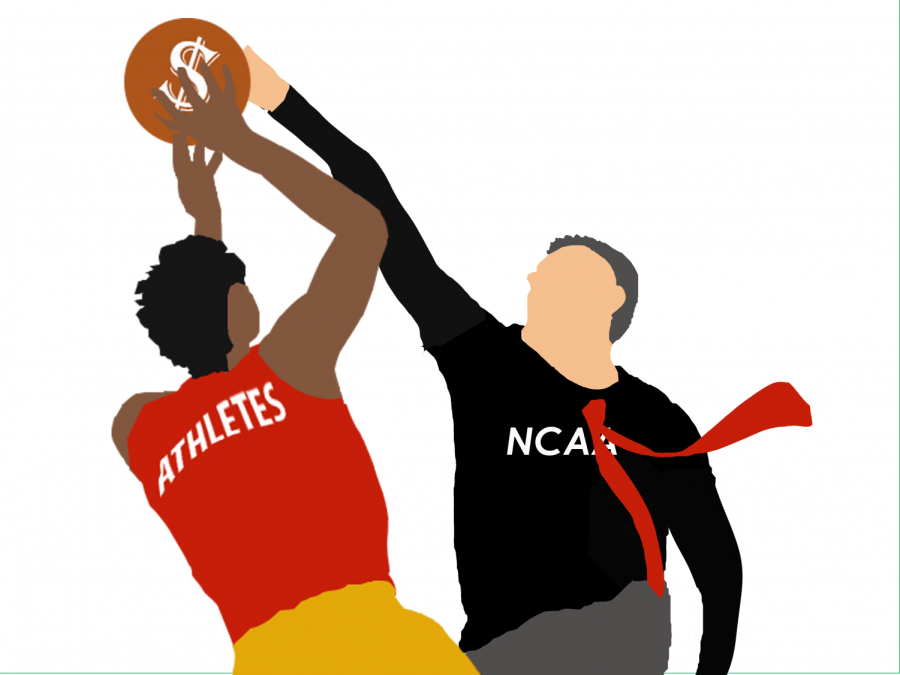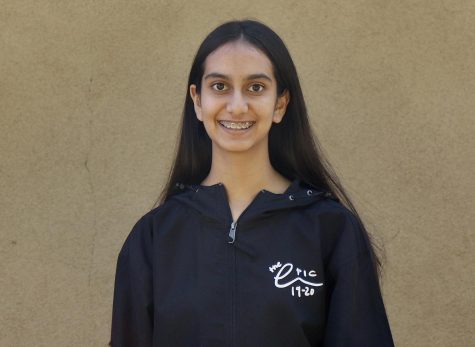College athletes are priceless, but they’re playing for free
NCAA exploits students’ talents by refusing to provide salary or scholarships
March 29, 2019
It is Feb. 20, and Zion Williamson, a forward on Duke’s basketball team, one of the top-ten ranked college basketball teams in the nation, is about to play a game against fellow top-ten ranked team from the University of North Carolina (UNC). Williamson, currently regarded as the best college basketball player, has made this game so highly-anticipated that the price of the cheapest ticket is almost equivalent to that of a seat at the Super Bowl: $2,500. Celebrities such as Barack Obama and award-winning filmmaker Spike Lee are in attendance. However, neither Williamson nor anyone on his team will receive a fraction of the money earned by Duke’s athletic program as a result of the game. Even worse: Williamson injures his knee in the opening minutes of the game, jeopardizing his entire athletic career for a few moments of playing time as an unpaid college athlete.
Many National College Athletic Association (NCAA) athletes, including Williamson and the Duke basketball team, juggle academics and college life while training hard and making sacrifices to play their sport at such a high level. Intercollegiate athletics are separated into three leagues by level: Division I, II, and III; Division I being the highest level. Generally, only Division I athletes are given full college scholarships for their talent, which is valid because they contribute considerably more to their respective athletic programs than do Division II and III athletes.
“As Division II or III athletes, we do not have the same athletic capabilities as Division I athletes, so obviously people are more inclined to watch [Division I athletes],” said Andrew Shao, Lynbrook Class of 2018 alumnus and a Division III athlete on the Massachusetts Institute of Technology track and field team. “People don’t really pay as much attention to Division III athletics. In that sense, I think Division I athletes really help publicize their schools and increase profit for them.”
However, a full college scholarship is not enough to compensate for Division I athletes’ efforts, and more often than not, even Division I student athletes do not receive athletic scholarships and must figure out other methods to fund their education. This is unfair because college athletes manage numerous activities in order to participate in their sport.
While any college student has a full schedule, a student athlete’s life is busier than most. For example, Lynbrook Class of 2018 alumnus and former volleyball player for the University of California, Irvine (UCI) Amy Steinmetz remembers that during the four-month college volleyball season, her team spent about 20 hours per week, training for their games, which usually occurred two or three times per week. Additionally, the team occasionally travelled across the country for games, resulting in missed class. The team’s demanding schedule had affected other aspects of Steinmetz’s life.
“Even during the summer or your offseason, it’s hard to be involved in clubs or organizations on campus because of how much classwork there is to catch up on [as a college athlete],” Steinmetz said.
The amount of time involved in being student athletes can limit them from more rigorous coursework, potentially preventing them from pursuing academic passions and limiting professional advancement.
For Steinmetz, the time commitment of being a student athlete along with being a computer science major was unmanageable, and consequently, she quit the volleyball team. Steinmetz recalled a conversation she had with a fellow college athlete and computer science major at UCI, who detailed the hardships of his experience, including not having time to spend with his teammates or other friends.
“My friend would sometimes forget to sleep at night because of how strenuous it was, playing for a college sports team while majoring in computer science,” Steinmetz said. “You have to manage your sports life and your schooling effectively because there is so much work.”
It can be argued that student athletes make the conscious decision to play on a college sports team while attending school, even though it requires a lot of time.
“[By being a college athlete], you are deciding that being on a team is more worth [the time] than doing other activities or having a job through which you can earn money,” said senior Kiana Hatim, who has committed to playing soccer for the next four years at Division II school Dominican University. You are doing the sport for fun and that is what it should be.”
While this may be true, numerous students are unable to afford college without an athletic scholarship. Even with a scholarship, students are unable to fully reap the the benefits of their education; in Steinmetz’s case, her teammates are limited by their athletic activities. In the least, student athletes should be paid while they play for the school, so they are compensated for their work.
“A lot of my former teammates are stressed about doing well in school and volleyball; they all want to drop out [of the team] most of the time,” Steinmetz said. “They feel like [they] just have to suck it up and play volleyball at school so they can get an education.”
Student athletes not only dedicate four years of their lives to winning games for a college’s athletic program, but they also increase publicity and profit for the program while doing so. Unlike in professional sports leagues, in the NCAA, it is quite common for sports fans to follow Division I teams that are not local or even their alma mater. The attention that the NCAA receives can primarily be attributed to a particular athlete or team’s popularity.
“Zion Williamson is a beast because he’s so young but he can do all these crazy things,” said senior Kavitha Thirumaran, captain of the Girls Varsity Basketball team and basketball fan. “You have respect and admiration for these athletes because they have to work hard to get to where they are.”
A scholarship is not enough to compensate for the widespread publicity or money which athletic programs receive as a result of student efforts. In 2018, according to the NCAA website, the organization made more than $1 billion solely through the Division I National Men’s Basketball Championship Tournament, commonly referred to as March Madness. However, unfortunately, only $216.6 million out of that money is allocated toward funding college scholarships for Division I athletes.
Additionally, a major portion of the NCAA’s revenue is earned through ticket sales or broadcasting rights. People pay to watch college athletes, not the coaches; yet, the teams’ members do not make a penny while coaches typically receive a sizable salary. For example, according to Forbes, Duke University’s basketball head coach is paid about $8.9 million per year while a college basketball player’s scholarship is worth only about $40,000 a year.. This discrepancy highlights the flawed NCAA system, in which coaches are paid more than 100 times the amount an athletic scholarship is worth. Athletes are not monetarily rewarded for their efforts, even on the rare occasion that they win a national championship or break records, while coaches and administration often receive considerable bonuses when their teams have notable achievements.
“I know some players on the Stanford women’s volleyball team that just won the national championship,” Steinmetz said. “They are honored, and they do have the prestige of winning first place, but they are not going to be paid.”
Some argue that only college basketball and football players should be paid, as they are participating in the most high-profile and profitable sports; however this argument is invalid because most of the time, athletes from other sports such as baseball or fencing do not even receive full scholarships.
“If you look at the NCAA website and look at the number of scholarships available for baseball, there’s not enough to go around,” said Ray Wright, Lynbrook PE teacher and father of Division I football player Ryan Wright. “I believe it’s about 12 full scholarships available for a baseball team of up to 35 players.”
It is not easy for student athletes to manage their education and play in the NCAA. These athletes sacrifice time to focus on coursework and other activities while continuously playing their best at each and every game.
Despite these efforts, student athletes are not monetarily rewarded. Both the NCAA and individual Division I athletic programs earn a substantial amount of money and receive considerable attention through broadcasting and endorsement deals from players who bring about interest in their respective sports, thus enabling the league to pay student athletes. Since Division I NCAA athletes are responsible for these profits, they should be paid.




























































